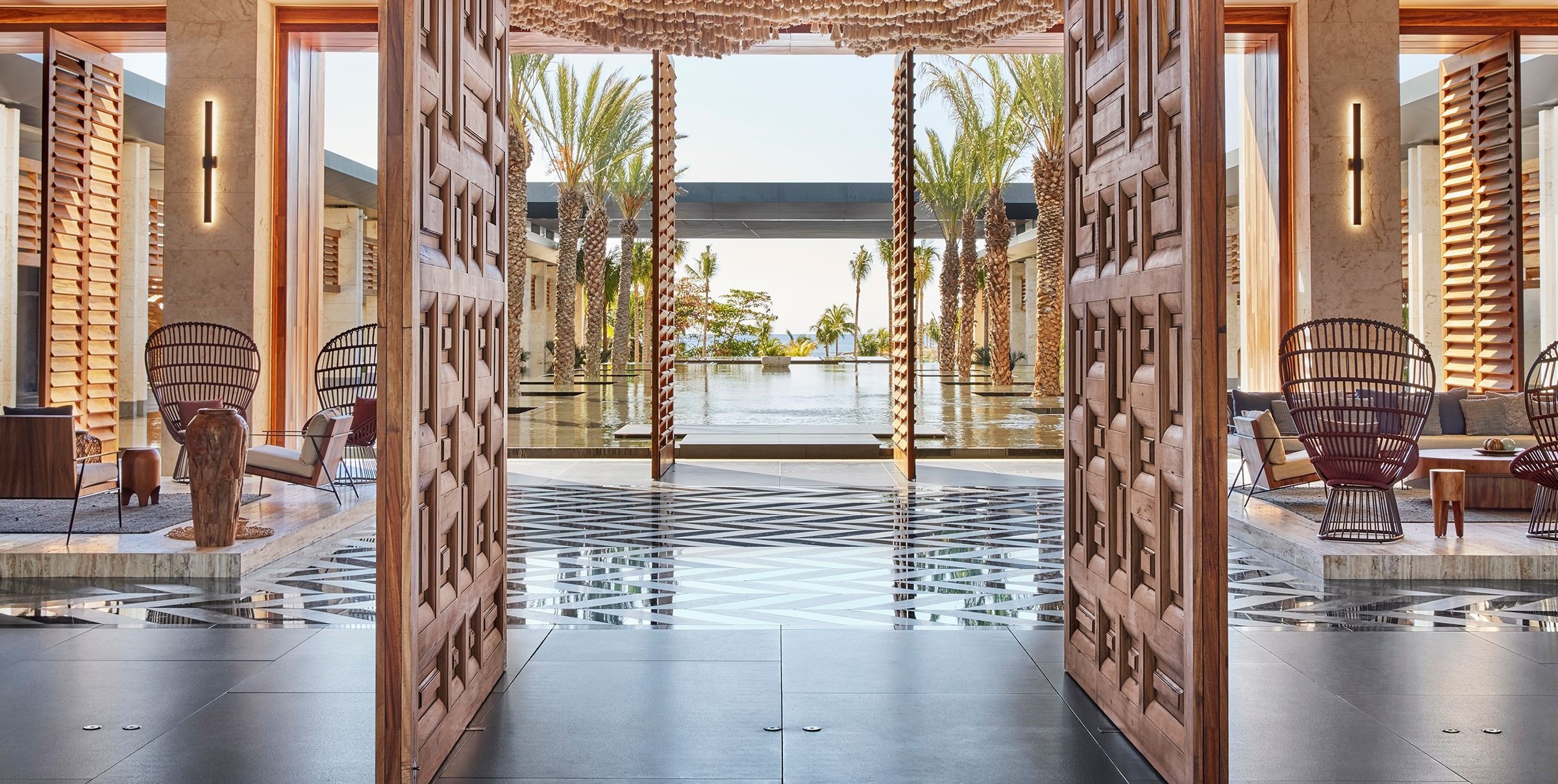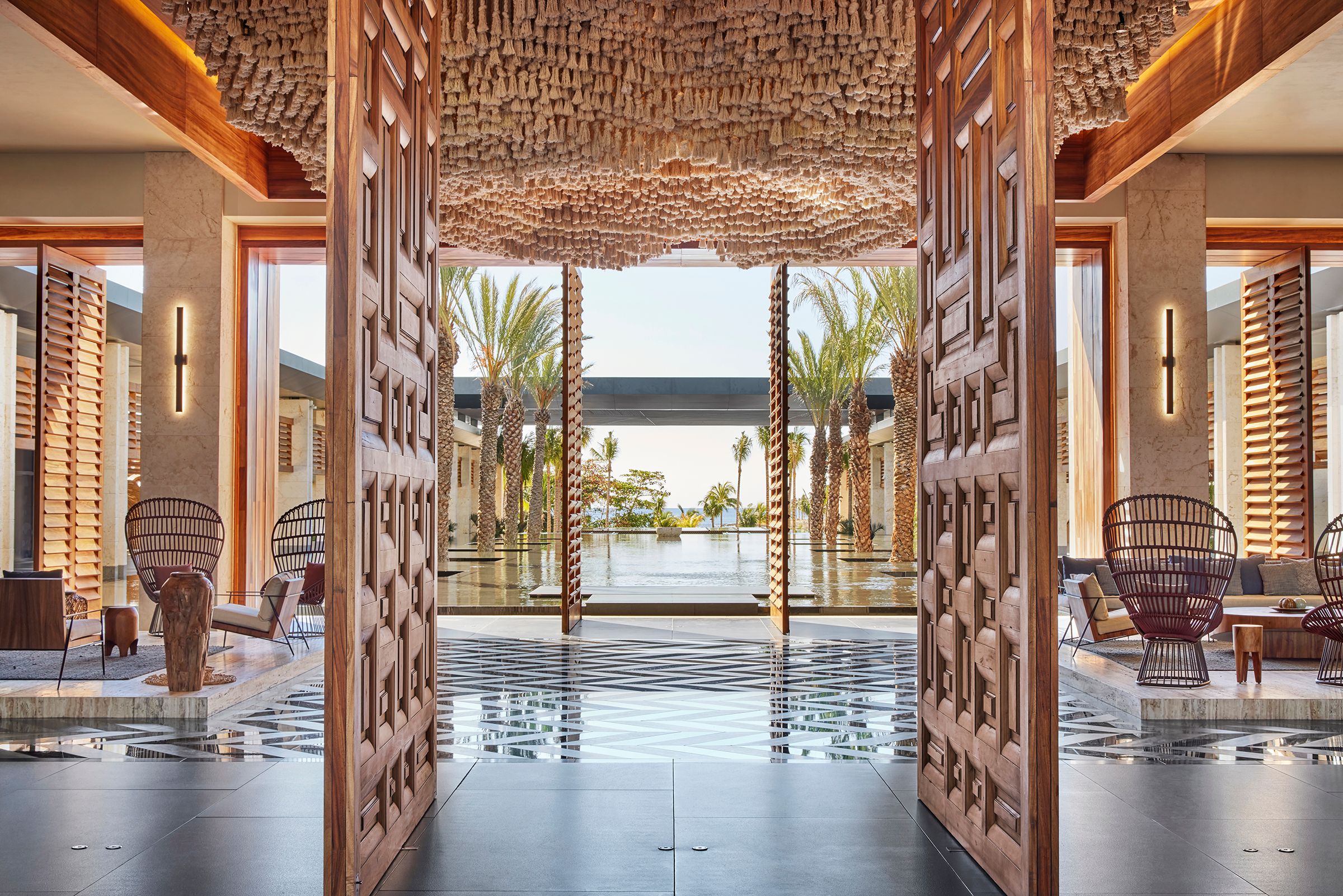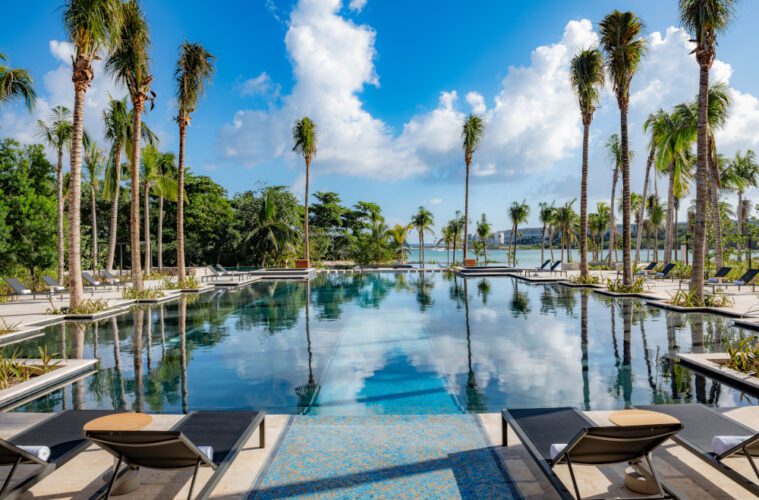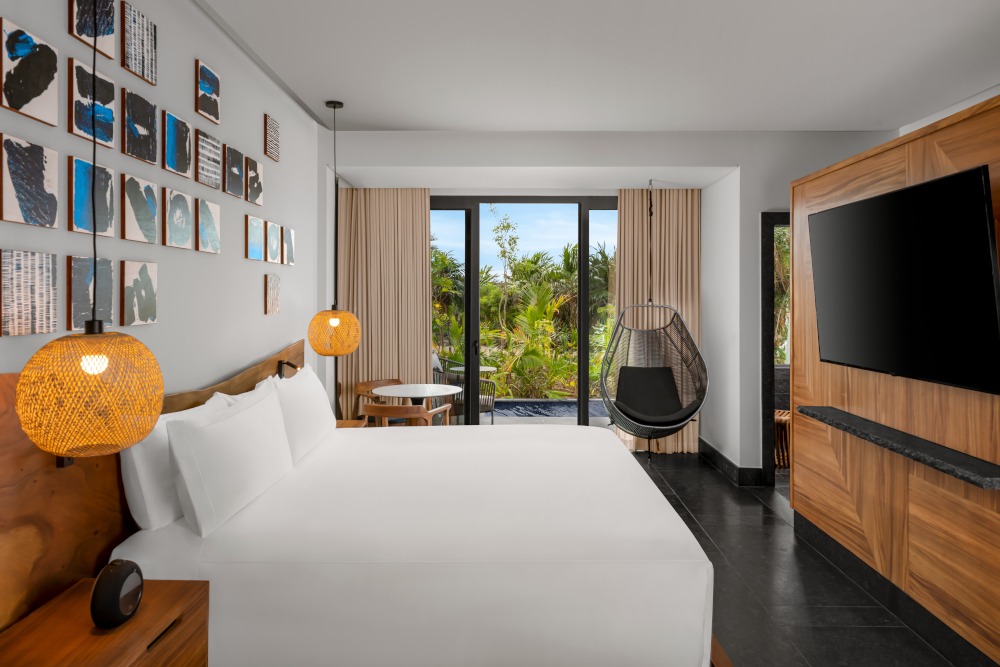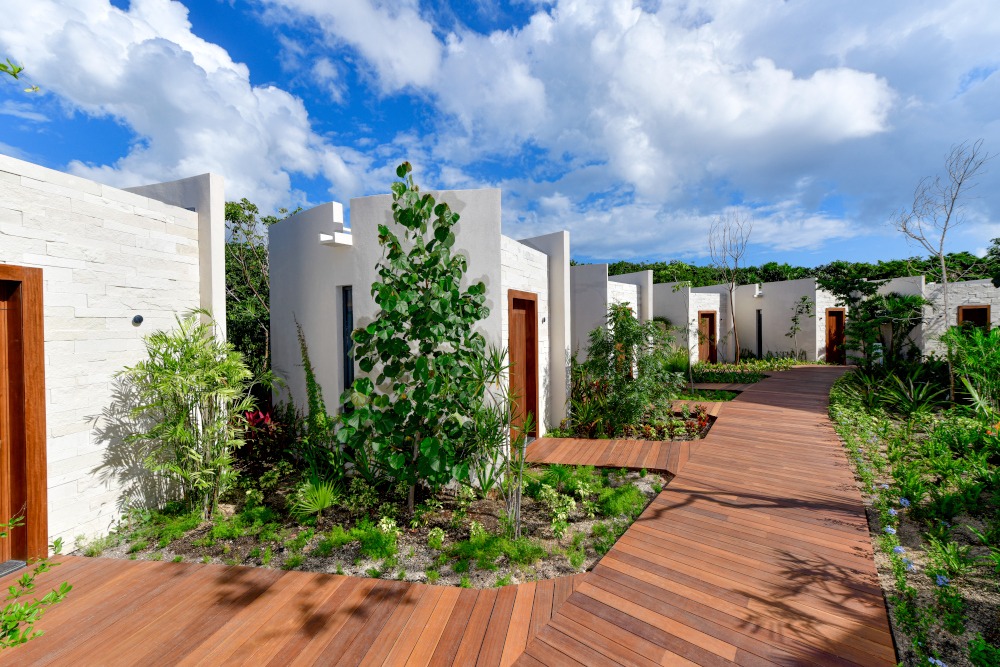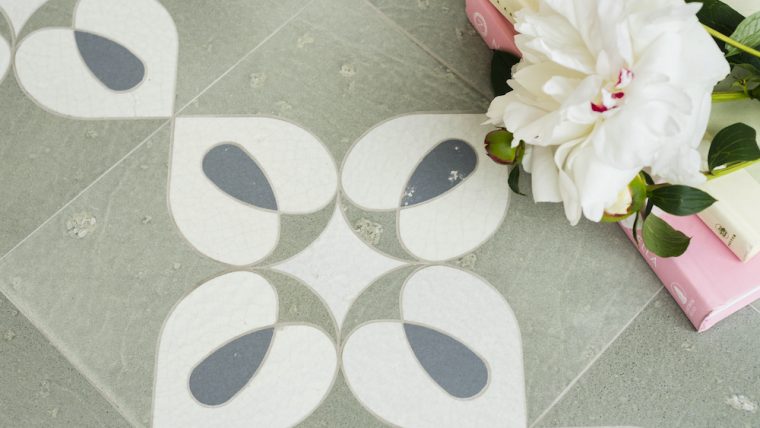The online edition of Ocean Home magazine today is running an interview I contucted with interior designer Meghann Day about her work at the recently opened Conrad Tulum Riviera Maya. I was a guest there early this month, and can attest to Day’s talents and attention to detail across the resort. A+A is pleased to re-post the feature today:
Interior designer Meghann Day knows how to conduct her due diligence.
Everything has a natural touch, sourced regionally. “All the materials are local – all the stone and wood – and tie back to the area,” Day, a partner at HBA San Francisco, says. “The client loves art, so there’s local art with the Mayan architecture.”
The first big idea was an ocean greeting as soon as a door opens – whether to the lobby or a guestroom. It’s all about the indoor/outdoor experience – expansive in the lobby, intimate in the guestroom. Either way, a guest is immediately connected to wide open spaces.
From the lobby there’s a direct sight line out to the distant ocean, framed by rows of palm trees lining a low, still body of water. “To the left and right there are louvres where the wind blows through – they tie back to the history of the area too,” she says. “There are art installations at each end, reaching back into Mayan history, as you step down to the ocean experience.”
The lobby ceiling is high, though not so high as an airport, for a carefully crafted feeling of intimacy. Three huge rope lighting fixtures drop down five feet from the ceiling, delivering a human scale to the space. “They’re soft, not hard, and there’s movement to them,” she says. “And the entry doors may be large, but the wood is a medium finish that feels nice and airy.”
Wood in both lobby and guestrooms is a native Tzalam, with a warm, walnut tone. Stone in the guestroom floors and walls is black granite; in the lobby it’s limestone with touches of granite.
The entire complex is surrounded by undeveloped mangroves, with roadways designed to rise up and allow native wildlife to pass freely below. But the resort’s also close to the ocean, with each guestroom facing it. “Every single person has a view of the ocean, which is spectacular,” she says.
Better yet, shower doors open to palm fronds and sky, and a sunken tub drops below the deck of each room. “We wanted to make sure that each guest had that indoor outdoor experience on every floor,” she says.
The crowning achievement at this resort, though, lies not in the lobby or the guestrooms, but in a calming spa. “When you walk in, if it rains, the water comes down naturally,” she says. “It’s a cenote, and it’s what Tulum is known for – a cave with water below and a spherical opening to allows rainwater in.”
Guests meander through the spa on wooden planks, blue sky open above. Textures inside massage areas are clad in Tzalam, and floor-to-ceiling windows open to the landscape but still afford privacy.
Day reinvented the cenote experience in a modern way. An outdoor pool is Mayan-inspired – it’s a palapa for relaxing. Lighting fixtures are woven – an ode to baskets found in local markets. A 15-foot opening spreads out above a chaise-lined pool below that’s precisely the same size “It’s all so soothing and peaceful,” she says.
Add a post-massage cup of green tea – and a five-minute staring session with a curious iguana, as I did – and you’ve got the ultimate Tulum experience.
“I would call it a wellness refuge,” Day says. “It’s a refuge first because of the beautiful spa, and then because of the ocean.”
After six years of study, she got it right.
For more, go here.

